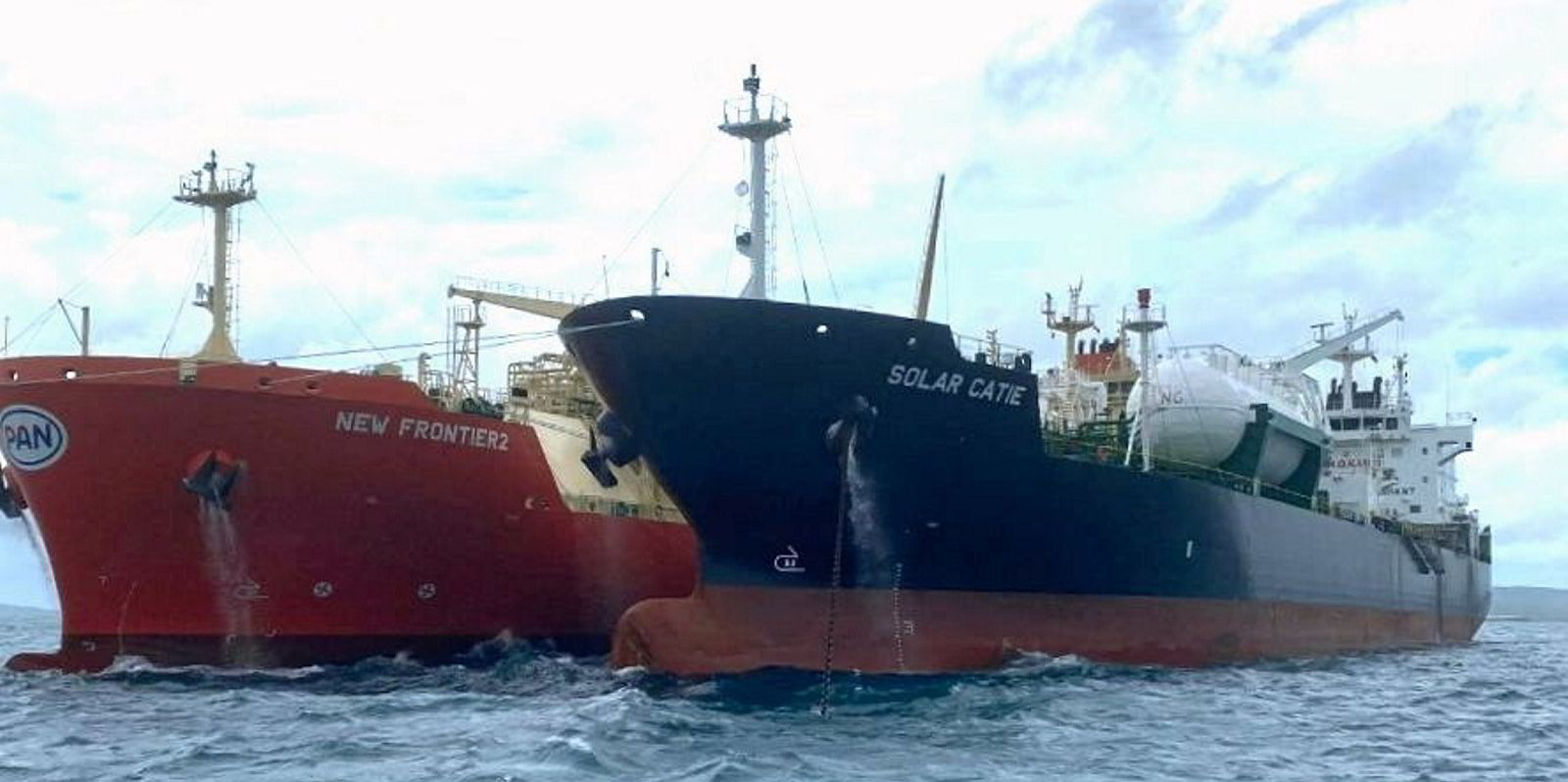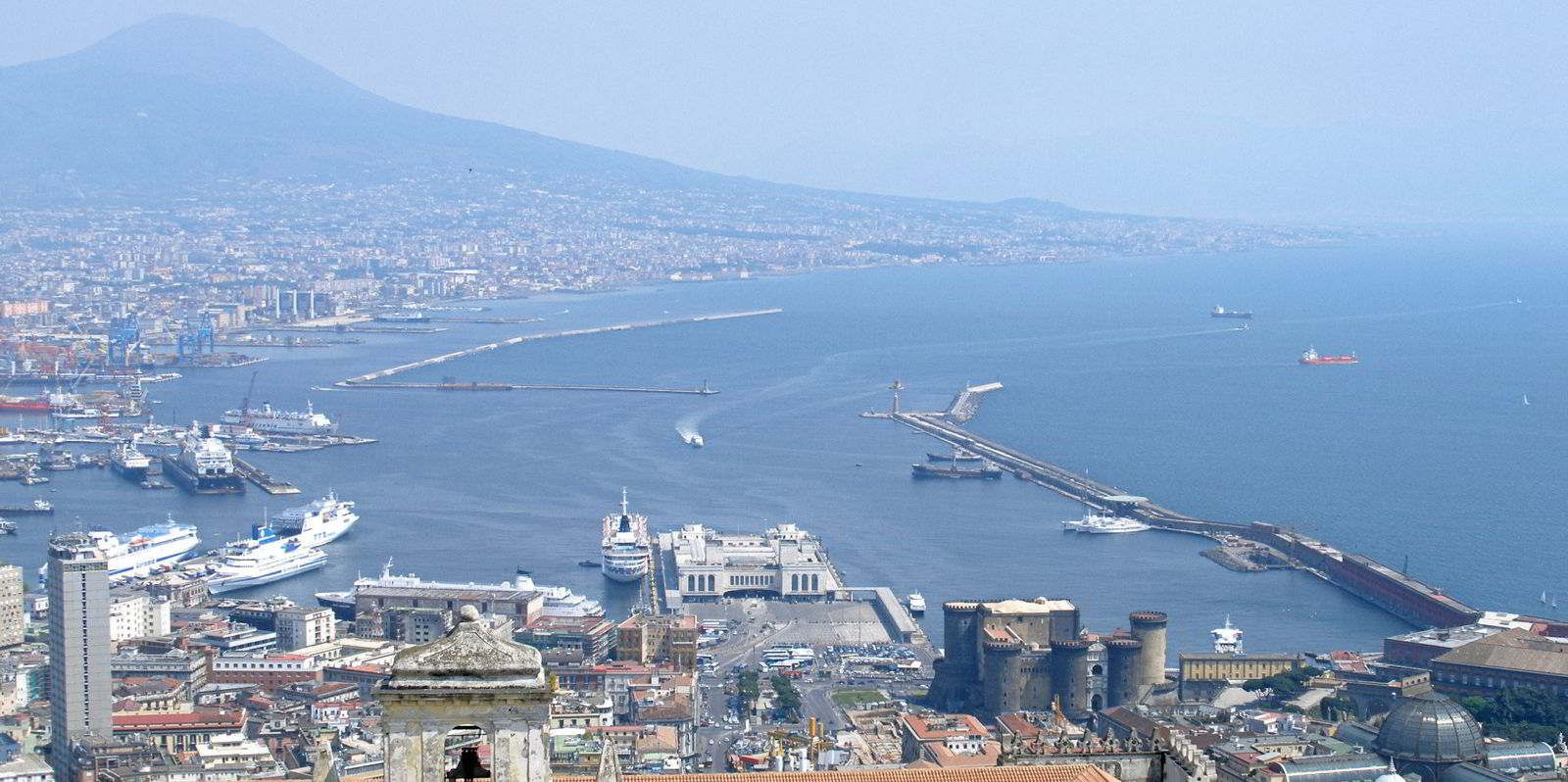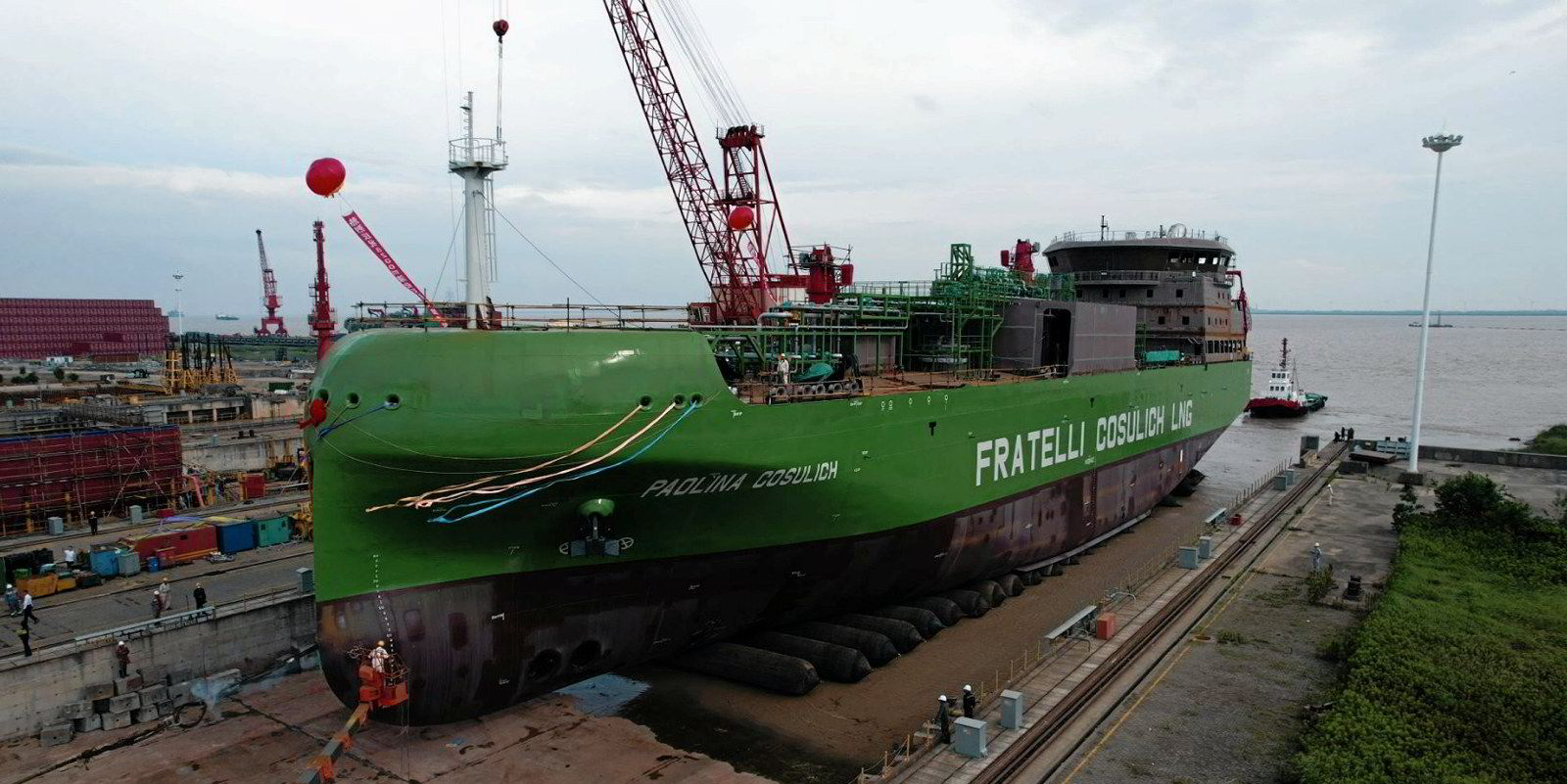Energy major Shell has put its latest LNG bunker vessel (LNGBV) to work in Jamaica as the company grows its alternative fuelling network in the region.
In a social media post, Shell general manager and global head of downstream LNG Tahir Faruqui said the 18,000-cbm LNGBV newbuilding New Frontier 2, which is owned by South Korea’s Pan Ocean, completed its inaugural LNG ship-to-ship operation in Portland Bight, Jamaica.
In a photo, the LNGBV is seen alongside the 24,621-dwt oil and chemical carrier Solar Catie (built 2021).
Faruqui said the operation was also a first for Shell in Jamaica.
He said the LNGBV is Shell’s “third ship deployed in the Americas” and detailed that it numbers among 12 LNGBVs for the company.
“The New Frontier 2 continues to strengthen Shell’s bunkering operations, ensuring LNG’s availability as a lower-carbon marine fuel across key bunkering locations worldwide,” he said.
Shell also operates the US-flagged articulated tug barge 4,000-cbm Q-LNG 4000 (built 2021).
Aside from the significantly larger New Frontier 2, bunker specialists said Shell also operates the 20,000-cbm Avenir Achievement (built 2022) in the region. The vessel started a three-year charter to the major at the start of 2023.
These two large LNGBVs are loading out of Elba Island in the US. They have been supplying LNG bunkers to container ship operator Zim in Jamaica and also observed shipping LNG into the US naval station at Guantanamo Bay in Cuba to supply its 24MW natural gas combined cycle Corinaso Point Power Plant and LNG terminal.
Shell is also due to take delivery of a second Jones Act LNG bunker barge which is set to be based in Savannah, Georgia.
Those working with LNG bunkering projects in the US told TradeWinds that there are many potential customers “kicking tyres” but added that they have yet to commit to contracts.
The build-out of LNGBVs and operations come as Pilot LNG teams with George Logothetis’ Libra Group-backed Seapath rejigs its US LNG bunkering project plans from a 600,000 gallons per day floating production supply unit.
The partners now plan to build a smaller land-based station designed to produce 300,000 gallons per day of LNG for bunkering from 2026 in the Galveston and Houston region which Pilot said would be better sized for the market and have a shorter construction period.






